We hope that each of you, our readers, will enjoy and appreciate this article we present about these 5 Marvelous Plants of Maine. It was certainly our pleasure to gather the information for you. May it provide you with both education and increased awareness.
Certainly, these few species listed herein represent only a portion of the similar marvels found in this area. It’s our belief, though, that they serve as excellent representations of the wonders that exist. Check out some of our other articles for similar marvels.
Dwarf Crested Iris
Dwarf Crested Iris Facts
- Leading off this article about 5 Marvelous Plants of Maine we present the visually stunning flora best known as the Dwarf Crested Iris.
- The somewhat descriptive term that we’ve used here serves as the most frequently used of the common names for this beautiful plant species. The delicate marvel also goes another, closely related general name. That’s the simpler term of the crested iris.
- The official scientific name for this creation of Nature and evolution is the comparatively simple term of Iris cristata. Regardless of which term one use to refer to it, however, one fact remains consistent. That’s the fact that, while gorgeous, it’s tiny.
- Though not the first to note it, the Scottish botanist, William Aiton holds the distinction of making the first official recognition of the plant as a separate and distinct species. This scientifically noteable feat the renowned researcher accomplished in 1789.
- Though it had long been known to the Indigenous Peoples of its native region, the American botanist John Bartram became the first European botanist to notice it. In the 1750’s, he sent several specimens to England. It’s been present there since 1776.
- For the moment, the IUCN has no listing for the Dwarf Crested Iris. Any such listing would appear on the organization’s published Red List of Threatened Species. This occurs both due to its numbers in the wild, as well as in global cultivation.
- It nevertheless facing some potential threats. Due to this, it’s listed as Endangered is a few parts of its native range. Habitat loss naturally represents one of the dangers it faces. Its greatest threat, though, most likely comes in the form of climate change.
Dwarf Crested Iris Physical Description
The delicate beauty of the Dwarf Crested Iris certainly merits attention from those who encounter it, of course. That aspect of its biology, however, manifests despite what some might think a disadvantage. That’s due to the fact that this marvel stands quite short.
More precisely, the perennial plant packs all of its outstanding beauty in a package that only attains a maximum height of around 6 in (15 cm). An average height for this floral variety, however, measures about 4 in (10 cm). Some specimens do not exceed 3 in (7.6 cm).
The iris variety also produces numerous long, slender leaves, which present a moderately deep green color. This rather distinctive foliage further develops in a highly variable length. These leaves extend outward in lengths ranging from 4 – 16 in (10 – 40.6 in).
Each plant typically produces a single bloom, though two develop on rare occasions. Remarkably, the petals of these tiny, delicate blooms develop in a wide variety of shades. Its sepals, meanwhile, have a white or yellow, central band, with a purple stripe.
Of further note is the extreme range of the shades the petals of the Dwarf Crested Iris manifest. These, in facct, develop across the spectrum lying between blue to purple to white. This range further varies from individual plant to plant, with no apparent pattern.
- Kingdom: Plantae
- Phylum: Angiosperms
- Class: Monocots
- Order: Asparagales
- Family: Iridaceae
- Genus: Iris
- Species: I. cristata
Dwarf Crested Iris Distribution, Habitat, and Ecology
Unfortunately for those who appreciate its beauty in the wild, the Dwarf Crested Iris possesses a somewhat limited native range of distribution. That’s due to the fact that the diminutive beauty appears naturally in only a small portion of the Northern Hemisphere.
That range of habitation covers portions of a total of nineteen states in the United States, in North America. These states appear in the northeastern, north-central, and southeastern portions of the country. Evidence further indicates it never spread elsewhere.
Somewhat surprisingly, this tiny Angiosperm evolved as endemic to soil containing relatively high ratios of lime. Given this, the plant most often appears naturally in areas such as rocky hillsides, ravines, oak woodlands, mountain ledges, and along gentle streams.
These regions, however, also need to meet yet another condition for the plant to thrive. These conditions must include the specific site to be well drained. If excessive moisture remains in the local soil, the species does poorly, severely limiting its potential expansion.
Pollination of the Dwarf Crested Iris principally occurs due to the activities of several types of bees. Several varities of hummingbirds, though, also favor the flowering plant, finding its nectar especially appealing. In cultivation, it also reproduces via root division.
It further prefers areas of cool, partially shaded conditions, but also does reasonably well in direct sunlight. Its magnificent flowers typically appear in early Spring. Afterward, the plant most frequently goes dormant during the local Winter season.
Local Native American populations, especially the Cherokee, have long used it in traditional medicines. Caution must nevertheless be taken with the little beauty. That’s because, like related species, many parts of this wonder of evolution are moderately poisonous.
Shameplant
Shameplant Facts
- The next entry into this compilation of 5 Marvelous Plants of Maine is the wonder of Nature holding the unique name of the Shameplant.
- Perhaps most notably, this deceptively simple-seeming flora most frequently goes by the common name applied to it here. Do not let that term fool you, however. In reality, it represents a fascinatingly evolved member of the pea/legume Family.
- It also goes by several other common names, though. These alternate terms themselves further provide subtle clues to its unique nature. Those terms include the sleepy plant, the sensitive plant, the action plant, and, most distinctively, the touch-me-not.
- Professional researchers, meanwhile know it best by its scientific name of Mimosa pudica. By either of these many terms, though, it remains a remarkably adapted species. It’s often planted by gardeners solely out of appreciation for its remarkable traits.
- The Swedish botanist Carl Linnaeus made the first formal recognition of the plant as a separate and distinct species. This intriguing recognition, furthermore, took place in the year 1753. The official publication of his work appeared in a book he published.
- Fortunately, the awesome Shameplant appears to be maintaining a population that’s both sufficient and stable. This further seems to hold true throughout the entirety of its natural range. The IUCN therefore currently lists it as Least Concern on its Red List.
- This status nevertheless remains uncertain, due to rapidly changing factors. For now, it faces no immediate threat from habitat loss, due to its range of appearance. It remains vulnerable to the same danger posed by climate change as all species, however.
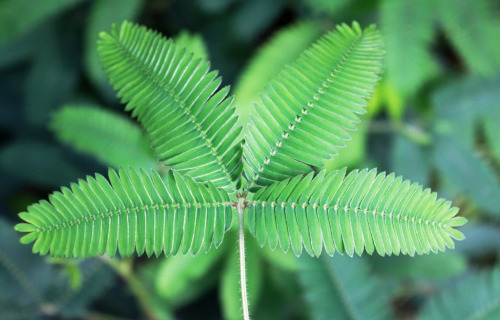
Shameplant Physical Description
Despite its name, the incredible Shameplant has absolutely nothing to be ashamed about. In this wonderful species of Angiosperm, Nature created a flora possessed of an astounding ability, in fact. It also evolved to develop as either a perennial or annual flowering plant.
When young, the thin central stem it produces remains mostly erect. As it ages, however, this turns into a creeping vine. In point of fact, this stem, which frequently branches, often hangs quite low, and has a decidedly limp consistency to it. It also has a prickly convering.
In total, the central stem attains an average length of roughly 5 ft (1.5 m). Form this, the many smaller stems branch out and develop elongated leaves. These further generally number between 10 – 26 in total, evenly arranged on opposite sides of the stem.
The flowers of the Shameplant, meanwhile, also appear along the length of the central stem. After blooming, these present as either a bright purple or a pale pink in color. Its prickly skinned fruit also develops in clusters of 2 -8 small pods, and contain tiny brown seeds.
- Kingdom: Plantae
- Phylum: Angiosperm
- Class: Eudicots
- Order: Fabales
- Family: Fabaceae
- Genus: Mimosa
- Species: M. pudica
Shameplant Distribution, Habitat, and Ecology
The amazing Shameplant presently has a primarily pantropical distribution, as well as also appearing in other regions. It originally evolved as native to portions of Central America and South America, however. The actions of man quickly spread the plant, though.
Now, this highly adaptable plant grows in the wild in many scattered parts of the globe. These include such regions as southern Africa, southern and eastern Asia. It’s also become quite well established in southern portions of the United States, in North America.
Its adaptability further serves to allow it to flourish in varied climates and habitats. Its native one, though, consisted of the tropical portions of Central and South America. The intrepid species nonetheless thrives, apparently equally well, in different temperate regions.
It nonetheless primarily grows in soil types that might surprise most people. That’s because it grows best in areas consisting of nutrient poor soils. The Shameplant also, however, prefers direct sunlight, performing less well in regions including copious shade.
It’s best known, though, for one amazing attribute. That’s due to the fact that its leaves actively defend themselves from damage! More precisely, if shaken or touched, these fold in on themselves in a matter of seconds. These then open again a few minutes later.
Purple Passionflower
Purple Passionflower Facts
- Placing in the third spot in this listing of 5 Marvelous Plants of maine, the breathtaking Purple Passionflower does so only due to random selection.
- The descriptive term it’s known by perfectly serves as one of the common names for this lovely and distinct beauty. It also has several other common names, though. These include such terms as the wild passion vine and the maypop.
- In addition to these, as well as several more, it also has a somewhat evocative scientific name, as well. That’s the equally appropriate term of the Passiflora incarnata. Regardless of the term chosen, though, it remains a most distinctive variety of flora.
- The first official recognition of this particular variety of passionflower, of which more than 600 exist, remains unclear, however. That’s due to conflicting reports.The first naming of the extremely extensive, as well as beautiful, genus, though, occurred in 1745.
- This occurred at the hands of the renowned Swedish botanist, Carl Linnaeus. The first recorded discovery of a member of this marvelous group happened in 1569. At that time, the Spanish doctor Monardes discovered one of them in South America.
- Very fortunately, the stunning Purple Passionflower also appears to be maintaining a sufficiently stable population throughout its range. The IUCN, therefore, presently does not have a listing for it. Any such listing would appear on the organization’s Red List.
- The wonder of Nature should, nonetheless, be considered to be at some risk, at least in its native range. It now exists around the world as an ornamental plant. Habitat loss poses a potential threat, but climate change likely remains its greatest.
Purple Passionflower Physical Description
It bears noting that the magnificent flora known as the Purple Passionflower evolved as a form of perennial vine. Given that fact, its exact dimensions understandably vary. For one, the marvel of Nature can develop as either a trailing or climbing variety.
In either variety, though, it remains capable of attaining a comparatively significant length. More precisely, some specimens also grow to a length of as much as 30 ft (9.1 m). The majority of individual plants, however, generally remain much shorter than this.
Its leaves typically develop a 3-lobed structure, but 5-lobed varieties do spontaneously occur in Nature. This foliage also usually presents a dark green in color, and possesses a smooth texture. On average, these reach a length equaling roughly 2.4 – 5.9 in (6 – 15 cm).
Yet, its the breathtaking and distinctive blooms of the aptly-named Purple Passionflower that garner the most attention. These develop 5 bluish-white petals, but further possess a bright purple and white corona. This naturally forms the source of the common name.
Though not as impressive as the gorgeous flowers, the fruit of the plant nonetheless merits its own attention. This also typically develops as an oval-shaped berry, roughly the size of a chicken egg. Although its starts out green in color, it slowly yellows as it matures.
- Kingdom: Plantae
- Phylum: Angiosperms
- Class: Eudicots
- Order: Malpighiales
- Family: Passifloraceae
- Genus: Passiflora
- Species: P. incarnata
Purple Passionflower Distribution, Habitat, and Ecology
Unlike some of its related species, the Purple Passionflower evolved as native a relatively wide section of the globe. In point of fact, it appears naturally in a specific portion of the continent of North America. It has, however, spread nearly worldwide.
More precisely, this wonder of evolution grows endemically in the southern and southeastern parts of the United States. This covers an area that extends from Pennsylvania in the northeast to Kansas in the mid-west, and as far south as Texas to Florida.
In the wild, this marvelous plant evolved as highly adaptable. As a result, it appears in a wide range of habitat types. These frequently include such areas as open fields, rocky slopes, thickets, thinly wooded regions, and sometimes even roadsides and ditches.
The plant does, however, greatly prefer these areas to be in mostly direct sunlight. Given the nature of its habitat, the beautiful Purple Passionflower accomplishes the majority of its pollination via the efforts of various local species of bumblebees and hummingbirds.
In some respects, unfortunately, the flora sometimes becomes considered an agricultural weed. It spreads prolifically. Historically, though, some people used it in traditional herbal medicines, and thus appreciated its extreme reproductive capabilities.
Lady’s Slipper Orchid
Lady’s Slipper Orchid Facts
- Our next choice to appear in this compendium of 5 Marvelous Plants of Maine is the stately beauty known as the Lady’s Slipper Orchid.
- It must be pointed out that the term applied herein actually refers to an entire Family of orchids. In total, this group contains more than 50 recognized species at this time. An amazing total of more than 30 of them also appear in one part of the world.
- Blessed by nature in this regard, that region’s the area consisting of North America. In addition to the diversity of its family, every one of the various forms stands our from its kindred. That’s because each species also varies from other orchids in a unique way.
- That holds true due to the fact that these varieties have been classified as diandrous. This means that each of these unique plants has two fertile anthers, rather than one, like other orchids. The reason for this evolutionary divergence remains unknown.
- Doubtless, climate change and habitat loss threaten many plants worldwide. Many of these particular species, however, continue to be fortunate. This holds true because twelve species occur on protected National Forest System lands, in the United States.
- Quite unfortunately, this family appears to have nearly disappeared from one portion of its range. In Great Britain, only one small population of a single species of Lady’s Slipper Orchid still survives. Thankfully, the site is carefully monitored and maintained.
Lady’s Slipper Orchid Physical Description
Since so many species bear the same common name of Lady’s Slipper Orchid, one fact can’t be denied. That’s the fact that physical variations naturally occur. In fact, many of the individual members of the remarkable group vary significantly in appearance.
The different members of the group nevertheless share many general characteristics with each other. Most notably, each remains characterized by the presence of slipper-shaped pouches on the flowers. These features of the plants play a key role in pollination.
The stems of the many different species also range greatly in terms of height. In point of fact, that range varies from 8-28 in (20-70 cm). Each of these, furthermore, usually supports 1-2 flowers. Sometimes, though, as many as 3 blooms develop on individual plants.
The different types of Lady’s Slipper Orchid also present a wide variety of colors. In this, these marvels of Nature follow the example of most related species. Most commonly, these colors include various shades of pink, red, brown, white, yellow, and purple.
The leaves of most member species, meanwhile, present their own distinctive beauty. That holds true due to the fact that this foliage displays a unique light green color. This trait further sets this particular group of species apart from most orchids.
- Kingdom: Plantae
- Phylum: Tracheophyta
- Class: Liliopsida
- Order: Orchidales
- Family: Orchidaceae
- Genus: Cypripedium
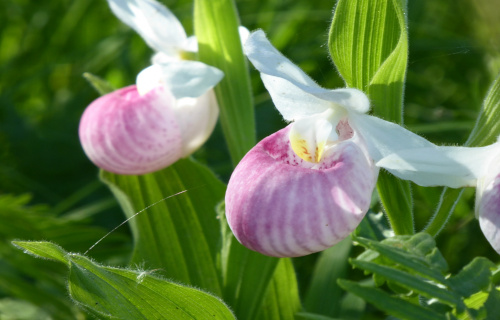
Lady’s Slipper Orchid Distribution, Habitat, and Ecology
Most fortunately, the gorgeous Lady’s Slipper Orchid family has a distinct evolutionary advantage over many flora. That’s due to the comparatively extensive habitat range in which it appears. That holds true since this zone of habitation doesn’t just include North America.
To the wonder of many, that extensive range also includes parts of the continents of Asia and Europe as well. The various species of the group further display extreme levels of adaptability. As a result, it inhabits temperate, boreal, and tropical forests.
While its beauty awes its admirers, factors working against it do exist. For one, its own growth rate presents problems for those attempting to preserve the family. That’s because experts rank it as one of the slowest-growing plants known to man.
In point of fact, individuals often require as much as 11 years of growth before reaching maturity and producing flowers. Regrettably, the fabulous Lady’s Slipper Orchid only reproduces via propagation and rhizomes, not with tubers as well, like other orchids.
The tiny seeds also rely upon a very unique symbiotic association. This the plant holds with a mycorrhizal fungus, for its germination. This highly unusual evolutionary development makes efforts to artificially propagate members of the family difficult.
Honeysuckle
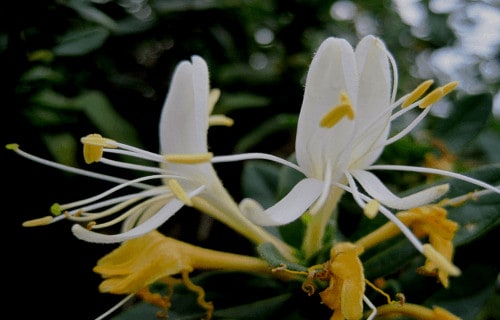
Honeysuckle Facts
- Closing out this listing of 5 Marvelous Plants of Maine we present you with the glorious flora known to many as the Honeysuckle.
- Perhaps surprisingly to some, the term applied to it actually names an entire Family of stunningly beautiful plants placed in the Caprifoliaceae family. Due to this, each of these remarkable species develops as either arching shrubs or twining vines.
- A remarkable total of roughly 180 recognized species of the plant further exist at this time. Several other species, however, remain under consideration for inclusion in the group at this time. Consideration of that status remains ongoing by researchers.
- All of the acknowledged members of this truly impressive Family of plants additionally share yet another characteristic. This particular one, however, has nothing to do with biology. In this instance, though, it’s a matter of general geography.
- That’s because all known varieties of this sweet-smelling and brilliantly colored plant evolved as native to the Northern Hemisphere. This geographical restriction also applies to those species presently being considered for inclusion in group.
- As of now, roughly 100 of the recognized Honeysuckle forms remain endemic to the country of China, in Asia. The continents of Europe and North America, along with the country of India, each further serve as home to 20 of the member species.
- The remaining forms of this marvelous Family appear scattered throughout various locations in the continents of Australia and Africa. Members of its group therefore benefit from one of the widest ranges of distribution currently known to science.
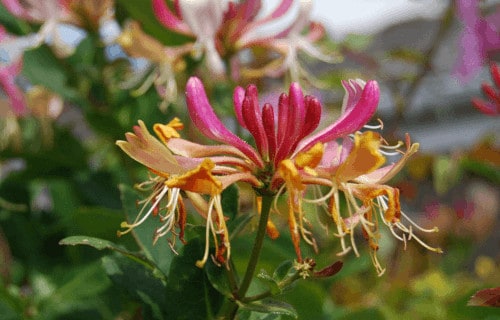
Honeysuckle Physical Description
Impressively, the majority of the known types of Honeysuckle evolved as comparatively strong twining climbers. On all of these, the leaves grow opposite, and develop as simple ovals. This visually appealing foliage also averages about 4.5 in (10 cm) in length.
Although most evolved as deciduous, some develop as evergreens. Many of the individual species also produce strongly sweetly-scented flowers. These blooms also produce small quantities of sweet, edible nectar. Most of the flowers develop in clusters of two.
Both shrubby and vining sorts have strongly fibrous stems which are suitable for binding and textiles. Like many beautiful plants, however, Honeysuckle has a somewhat dark secret. That’s because the fruit of the Angiosperms possess low level of poisonous compounds.
In appearance, these fruits possess either a spherical or somewhat elongated shape. The most commonly seen colors of the fruit include red, blue, and black. Nonetheless, on rare occasions, specimens produce this aspect of the plant in a wide range of hues.
- Kingdom: Plantae
- Phylum: Angiosperms
- Class: Eudicots
- Order: Dipsacales
- Family: Caprifoliaceae
- Genus: Lonicera
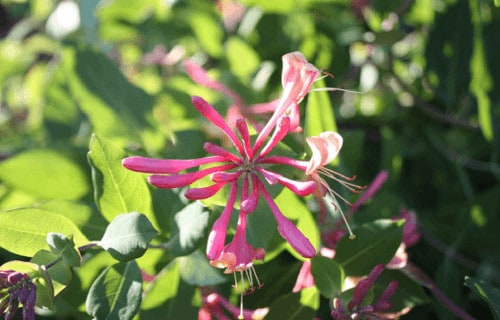
Honeysuckle Invasiveness
Amazingly, while the fruit of many varieties of Honeysuckle evolved to be toxic, this does have some uses. That holds true due to the fact that, in a few cases, the fruit of the Angiosperm, while quite tiny, can be consumed and even used for types of commerce.
This part of the stunning plants also has other natural uses, though. This remains true because the berries of most forms also remain attractive to numerous forms of local wildlife. For example, a wide variety of butterflies and hummingbirds love them.
Quite unfortunately, however, several species within this remarkable Family have now become invasive. This occurred when they were introduced outside their native range. This remains particularly true in both New Zealand and the United States.

Honeysuckle Popularity
Due to its many qualities, the Honeysuckle has now become popular in many regions of the world. This most commonly manifests itself in using it as a garden decoration. Many people use it both because it smells beautiful, and covers unsightly walls and outbuildings.
This gorgeous and colorful plant has also become quite popular for its sheer pleasure to the different senses. In fact, a great number of people find it pleasant to use for the numerous blooms it produces in the summer. These form as quite beautiful and highly aromatic.
The hardy climbing types of Honeysuckle do have certain specific needs. That’s because most forms need the roots in shade, but the tops prefer sunlight or very light shade. Finally, the varieties one uses also need to be chosen with care because most grow prolifically.
5 Marvelous Plants of Maine
We hope that each of you enjoyed reading, and hopefully learning from, this article we’ve written about these 5 Marvelous Plants of Maine. It’s also our hope that doing so has left you with either a new or renewed appreciation for such wonders of Nature.
Unfortunately, however, many of their kindred around the world now find themselves facing strong threats to their continued existence as a species. Many of those dangers, in fact, stem from the actions of mankind. We must do all we can to protect and preserve them all.
Check out our other articles on 7 Magical North American Moths, The Mighty Tornado, 3 Magnificent Manatees, Wonderful Wild Cats of the World, 4 Remarkably Evolved Reptiles
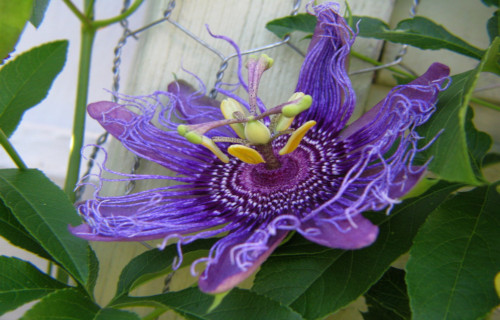
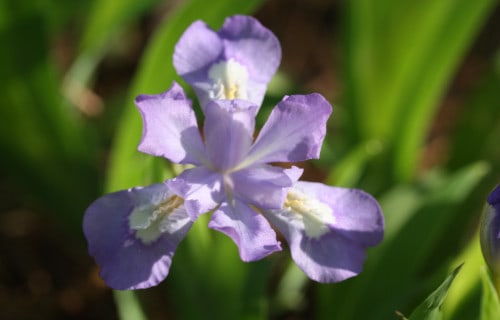
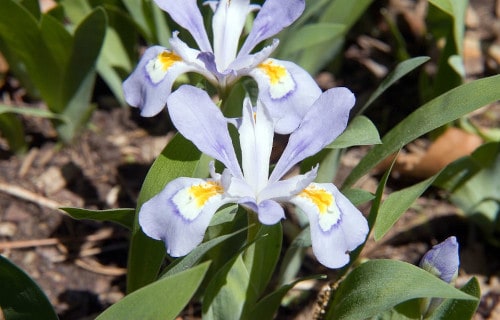
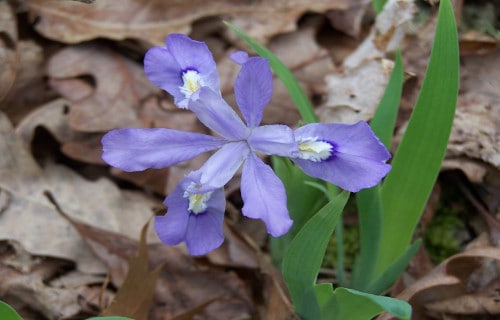
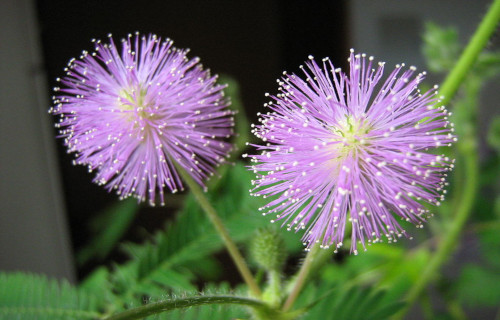
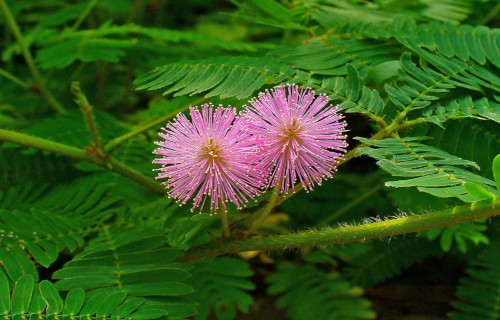
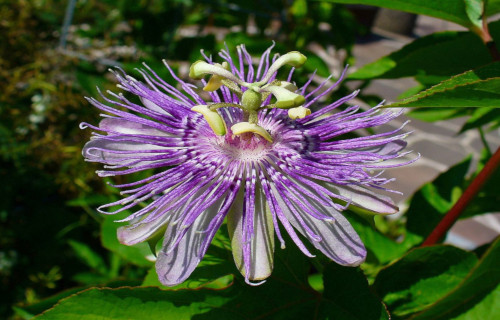
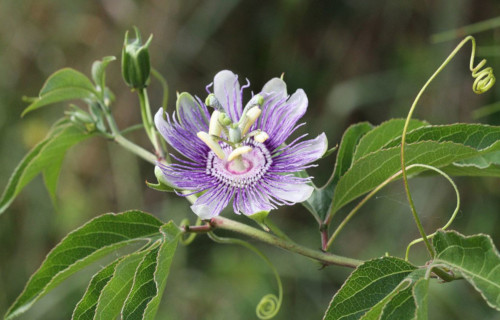
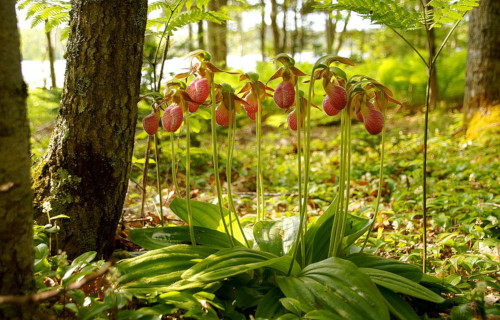
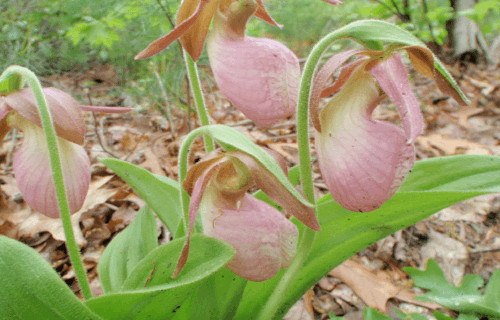









Leave a Reply